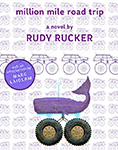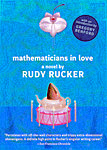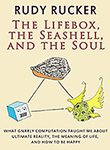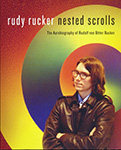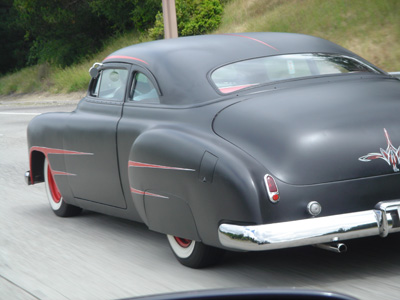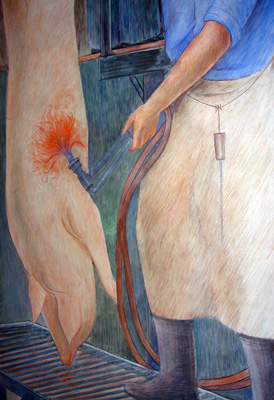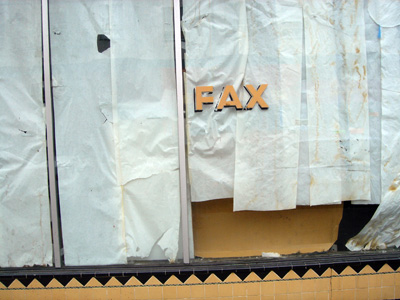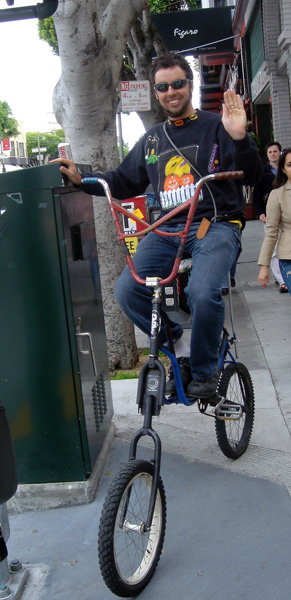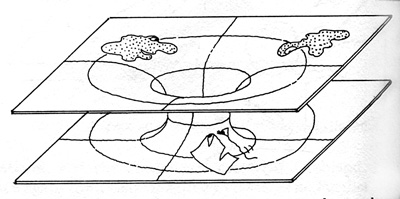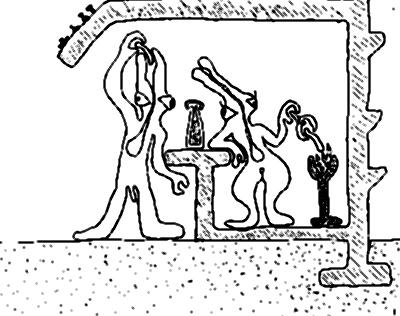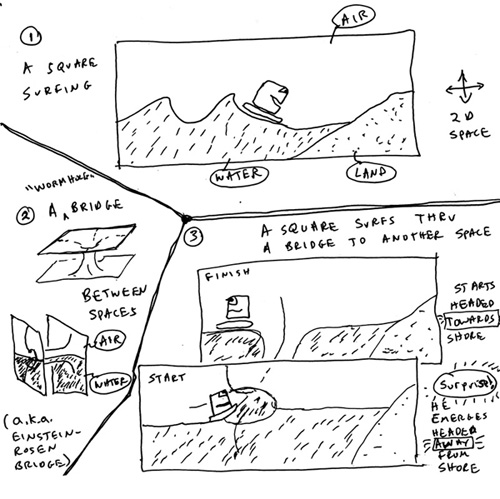In the novel that I’m working on, Mathematicians in Love, I’m starting to talk about this special mode of thought called hierophantics. I get that word from a certain Tarot card, a trump of the Major Arcana. I love that esoteric stuff — that’s why I ended up as a mathematician.
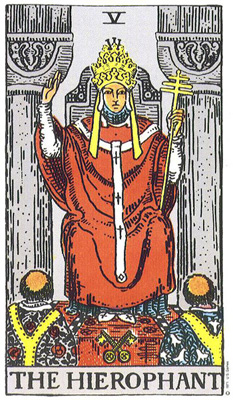
The Hierophant card shows a wise woman who explains mysteries. At least I think she’s a woman. The etymology of the word is Hiero + phant = mystery + show; it’s akin to hiero + glyph = mystery + symbol.
In my novel, some cockroach mathematicians from Galaxy Z claim that hierophantics can collapse even the largest exponential search into a few ultraefficient steps. So now I’m trying to figure out a hand-waving explanation of how hierophantics works, and then I’ll want to think about how it would feel to think hierophantically.
A quantum mechanics advocate might suggest that knowing hierophantics means being able see across the multiverse and search all the universes at once. But I'd rather avoid QM, as I think the QM worldview has gotten a free ride for too long as being self-evidently “correct”. QM could be wrong, after all, it could an epiphenomenal view on a par with statistical mechanics. You can have hidden variable as long as you're cool with reverse causation and cosmic synchronicity.
A non-QM way to have hierophantics works might be by having your mind become in some sense infinite. Perhaps some of the gray matter becomes fractalized into an infinite number of sub-particles. (And don’t worry about quantum fuzz, as in my universe quantum mechanics is wrong; it’s merely so we can have arbitrarily small particles.)
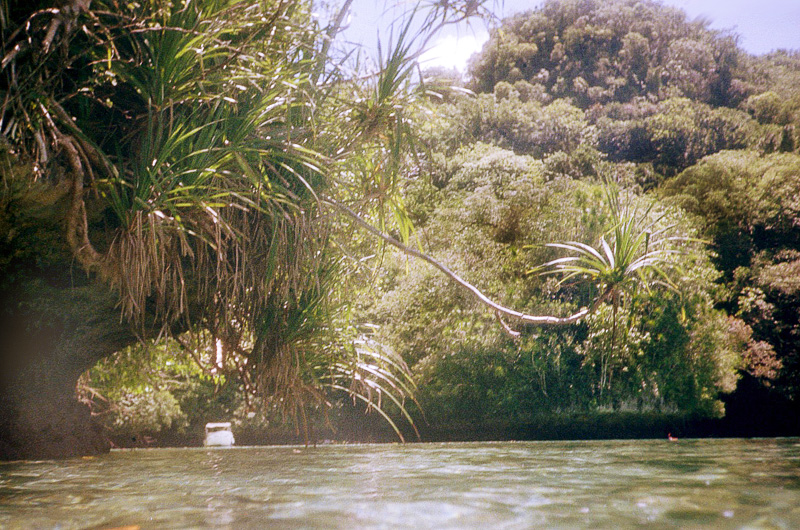
The way you learn hierophantics is by eating Nataraja worms, by the way. These creatures live in this other world La Hampa that my characters are visiting. It looks a lot like Micronesia there, transreally enough.
Bela, Paul and Alma are having a luau with some alien mathematicians at the edge of this lagoon. One idea is that the fractal matter of the worms gets into your system. Our heroine Alma is dubious about eating the worms.
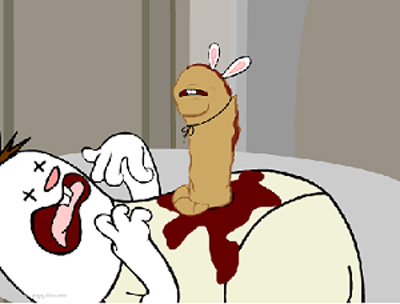
“I don’t know,” said Alma. “What if the food’s full of sick eggs that’ll hatch larvae inside us that eat our flesh and burst out — yuuuugh?” She made a rapid gesture to mime something erupting through the wall of her abdomen.
Here I’m referring to the classic first Alien movie. I couldn’t find an image of that scene online, but I did find a terric short cartoon version of Alien re-enacted by bunnies, by Jennifer Shiman.
Do the worms have to “teach” hierophantics by putting a new kind of matter into you? Maybe it could be more of a software change.
As I discuss in The Lifebox, the Seashell and the Soul,
exponential speedups have arisen at several of the stages in the human history of technology. Could it happen again?
The development of a common language, for instance, allows all the members of a society to think faster. The speedup seems more than merely linear, as entirely new kinds of cooperation become possible. And the introduction of writing, of the printing press, of telephony, and of the Web — each of these has brought about a large and possibly exponential speedup in the computation rate of the hive mind as well. My sense is that the introduction of language and the successive communication enhancements have sped up the hive mind’s activities to the same degree that using numbers speeds up the process of arithmetic.
Could there be some new thought mode that would provide us with another exponential speed-up? If you look at the intellectual history of the human race, you’ll notice that there aren’t really all that many new ideas we’ve come up with. A lot of what scientists and artists occupy themselves with is putting old wine in new bottles. Maybe there’s a whole level of thought that simply hasn’t occurred to us yet — a breakthrough as radical as calculus, as radical as positional arithmetic notation, as radical as language.
Hierophantics!
Imagine being a person who knows no language at all trying to imagine language. That's how it is for us to imagine hierophantics. I see it as a system of high-level patterns that provide immense short-cuts, far in excess of the mere linear speedup you'd obtain from any piddling little “Singularity”…
I figure once Bela knows hierophantics he'll be able to figure out how to finally get the Republicans out of power!


